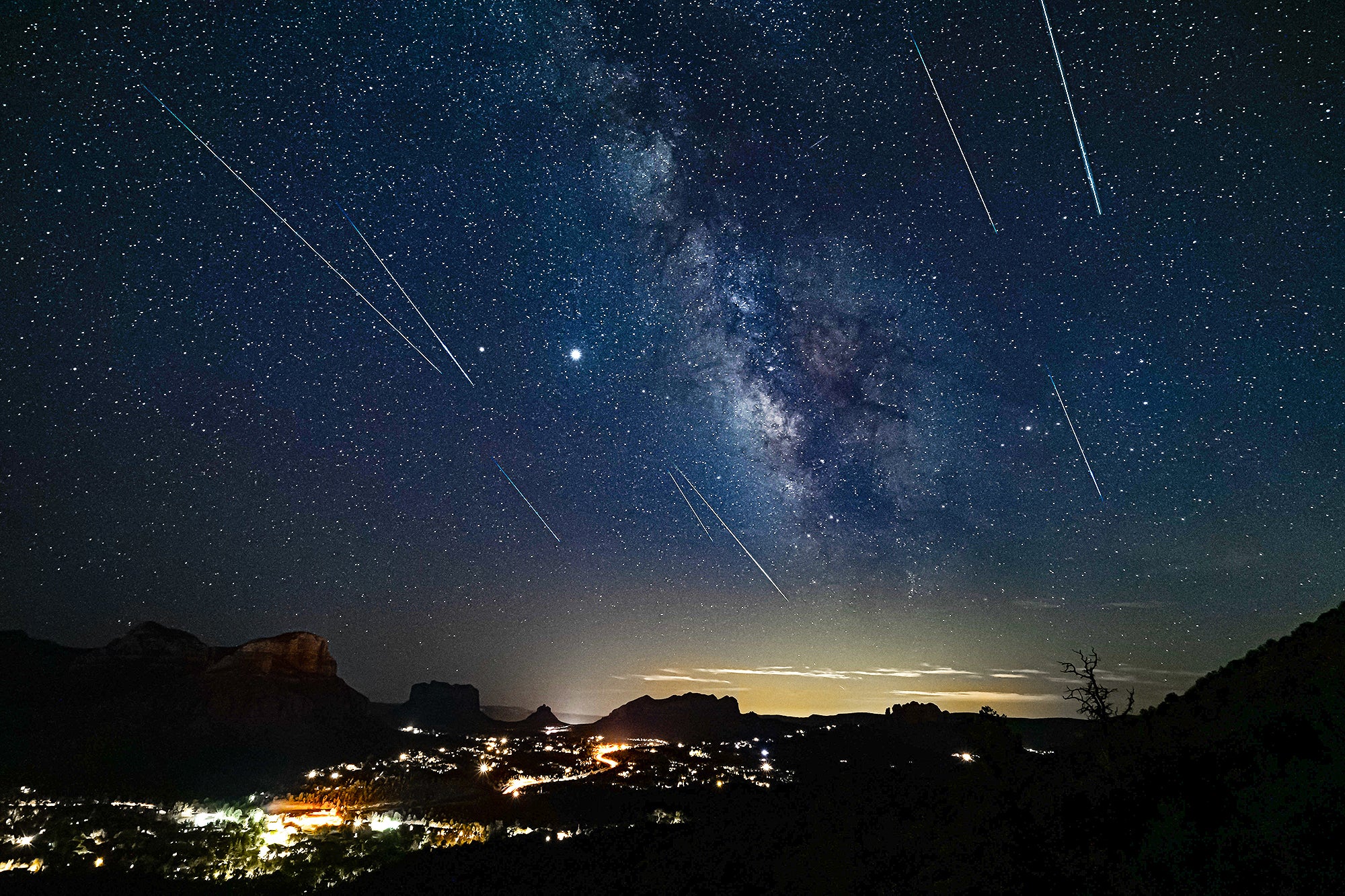Each summer, one of the most dazzling astronomical phenomena of the sky, the meteor shower, awakens the curiosity of the meteor. Known for its high meteor count, bright fire shells, and long-lasting trails, the Perseids are widely considered the most luxurious and reliable meteor shower that appears from the northern hemisphere.
In 2025, the Perseids will reach the peak on 11 August, thanks to a Crescent Moon with an ideal viewing position, which will set early, leaving a dark, clear sky. Observers in dark areas can see 100 meteors per hour in the sky. Whether you are an amateur stargazer or an experienced astronomy enthusiast, this offers a unique opportunity to see the talent of nature on a grand scale. You just have a clear night, a dark sky, and a little patience to enjoy the show.
Check Out: Buck Moon 2025: Check Its Meaning, Date, Visibility and Interesting Facts
What is the Perseid Meteor Shower?
The Perseid meteor shower is an annual celestial event that occurs when Earth passes through the trail of debris left behind by Comet Swift-Tuttle, which orbits Earth every 133 years. Each year, from about mid-July to late August, as Earth travels in its orbit and encounters the debris field, tiny bits of rock and dust from the comet enter Earth's atmosphere at speeds of up to 133,000 miles per hour. As they enter the atmosphere, they burn and leave behind bright streaks of light across the night sky, which is referred to as "shooting stars."
The meteors are named for their radiant in the direction of the constellation Perseids. This meteor shower is known for a high volume of meteors, many of which are fast and bright. The Perseids are also known for producing fireballs, which are exceptionally bright meteors that can be seen over large peripheral distances.
UPCOMING 🚨: The Perseid meteor shower peaks August 12 with up to 75 meteors per hour or more than 1 meteor every minute! ☄️
— Latest in space (@latestinspace) August 5, 2025
Best visibility in dark regions with little to no Moon and artificial light pic.twitter.com/dPxC6QHYqB
Time to see the Perseid Meteor Shower
One of the most anticipated sky events of the year, Perseid Meteor Shower, will be visible in the United States at the night of August 12 to August 13, 2025. The best viewing time is morning, especially between 3 pm and 4 pm, when the sky is the deepest and the meteor activity reaches its peak.
While Perseid usually produce 100 meteors per hour under ideal conditions, this year's performance will be almost affected by the brightness of the full moon, which can limit the visibility to about 10 to 20 meteors per hour.
Nevertheless, the show is expected to be meaningful, especially in areas with minimum light pollution. To get the best view, go to a dark, open place away from the city lights. Allow your eyes to at least 20 to 30 minutes to adjust in the dark.
If the moonlight is very strong on the peak night, try to see again on 16 or 17 August, when the sky will be darker. Even with a bright moon, Perseid is known for their topical fire-shells that can lighten the night sky.
Perseid Meteor Shower in the U.S.

If you want to enjoy the Perseid Meteor Shower in the U.S., you will likely want to find locations that are dark-sky areas: areas away from city lights where the stars and meteors are easily visible. Here are some of the best locations beyond your typical major U.S. City such as New York City, Chicago, Los Angeles, etc.:
New York City
Date: From Tuesday night till the wee hours of Wednesday, August 13, 2025.
Ideal Time: 3 a.m. to 4 a.m. (EDT)
Suggested Viewing Sites:
Fort Tryon Park (at the northernmost tip of Manhattan, limited urban lights)
Pelham Bay Park (Bronx - widely open spaces, less light pollution)
Harriman State Park (an hour from NYC is one of the best locations for dark skies)
Chicago
Date: Late Tuesday night, August 12 into early Wednesday, August 13, 2025.
Best Time: 03:00–04:00 a.m. (CDT)
Where To Watch:
Indiana Dunes National Park (an hour from Chicago) offers wonderful stargazing opportunities
Busse Woods (in Elk Grove Village) has accessible and darker than city parks
Starved Rock State Park (2 hours from the city) is fantastic for dark skies
Los Angeles
Date: Shed in the shadow of the night of August 12 and dawn of August 13, 2025
Best Time: 3:00 a.m. to 4:00 a.m. (PDT)
Where to view:
Angeles National Forest (north of L.A., dark skies and elevation)
Griffith Park (higher trails) (some elevated spots have decent visibility)
Joshua Tree National Park (approximately a 2.5-hour drive away, perfect dark-sky spot)
Comments
All Comments (0)
Join the conversation